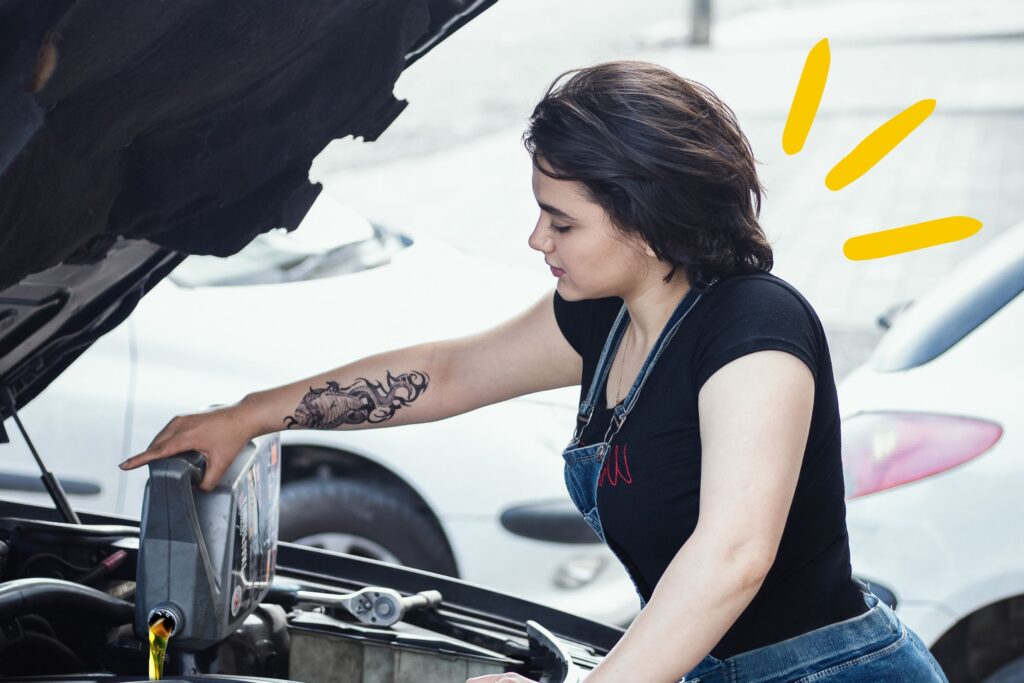Attention, car owners! Wait, woah, woah, woah; get your eyes back on the road! We’re in motion here…
Sorry about that. Phew. Now that you’re safely parked and your engine’s turned off, let’s start again.
Attention, car owners! If your car is more than three years old, it will need to be annually submitted for an MOT to ensure it is sufficiently roadworthy.
Of course, the MOT (Ministry of Transportation) test is nothing new – its first version was introduced in 1960 – and you probably already know that, but regardless, we have your attention now, so stay with us.
Initially, the MOT wasn’t as nearly as thorough or extensive as it is now; just a quick, cursory once over and you were on your way. But as vehicles have become more advanced, these routine checks have focused on an ever larger number of systems.
Wondering why your neighbor’s driveway has been empty all morning? Well, it’s that time of year again – their car is due for its annual MOT check. This crucial inspection has been keeping Britain’s roads safer since 1960, examining everything from tire treads to emission levels. While some drivers dread this yearly ritual, it’s actually a helpful way to catch small issues before they become major headaches. Just remember: if your vehicle is over three years old, booking that MOT check isn’t just good practice – it’s the law.
In Great Britain, vehicles that are older than three years must pass the test every year. In short, it’s illegal to drive without an up to date MOT (though some exceptions and exemptions do apply). Cars that are used only on small islands are exempted from this routine check; Jura, Sark, we’re looking at you. What’s more, tractors and vehicles manufactured before 1960 are also exempted from MOT.
It should be noted that in Northern Ireland, the regulations about MOT are somewhat different. Vehicles that are over 4 years old (not 3) require an MOT test if their owners intend to use them. On the other hand, the law in Northern Ireland doesn’t grant exceptions on the basis of where the vehicles are used.
But what checks should you expect? Well, an MOT includes a vast array of checks all over your vehicle, many of which you can’t anticipate or prepare for. That said, there are always a few things you can investigate yourself ahead of time to help reduce the chances of your car failing.
With that in mind, here’s how to prepare your car for its MOT and 5 of its most common causes for a fail.
Tyres
If it’s been a while since you decided to buy new tyres for your car, this could be a quick and easy place to start to ensure your car is roadworthy moving forward. Otherwise, it might not be moving forward, at all.
The minimum legal depth of tyre tread in the UK is 1.6mm across the central 75 per cent of the tyre and around the entire circumference. Insufficient tread depth will result in your vehicle failing its MOT, make no mistake.
A simple way to assess your tyres (without using a mechanic, of course) is to place a 20p piece in one of the grooves; if you can see the outside rim of the coin, you will need new tyres.
If the tread is fine, make sure the size and type of tyre you have fitted is compatible with the information in your vehicle handbook. While you’re at it, check the tyre pressure, too.
If you’re still not tired of all this tyre talk, stick another few coins in the parking metre, and check out these 5 IDEAL tips for keeping your tyres healthy.

Lights
We hope this isn’t a lightbulb moment for you, but we’ll repeat it nonetheless; if you have a blown bulb, then your car will not pass its MOT.
With the ignition – not the engine – turned on, spend a few minutes checking all your lights are operating as they should, using a family member, friend or window reflection to check the brake lights as you gently press the pedal. If they’re not working, replacing a bulb is a quick and easy fix. Check out this instructional from WikiHow, or for model-specific instructions, check your car’s manual.
Of the 31.7% of cars that failed their initial MOT test between July and September in 2019, 13.9% were due to lamps, reflectors and electrical equipment – more than any other category, meaning this is one area it’s essential to shine a light on.
Windscreen
Make sure there are no cracks in your windscreen and your wipers are in good working order. Even a small chip in the driver’s line of vision can cause a failure.
Replace a wiper if it is unable to give you a clear view of the road ahead and top up your washers to ensure they can sufficiently clean the windscreen.
Inside your car, if you have a phone holder attached to the windscreen it is best to remove it if it could be deemed to be interrupting your view of the road. Ditto any comedy fluffy dice hanging from the rearview mirror. As MOT in Leeds experts Fixter tell us, exterior and rear view mirrors should be checked and, if necessary, adjusted before every journey. The more precisely you do this, the smaller the blind spot will be.
Quick Interior Checks
Whilst inside your car, test the horn, handbrake, seatbelts and mirrors for any issues. Take a close look at your dashboard to see if there are any warning lights showing up. If there are, consult your vehicle handbook to find out what it means and look to get the issue fixed before your MOT.
Check that your seatbelts extend and retract smoothly, and that they lock when you pull them sharply. Ensure all seats are firmly secured and don’t wobble when pushed. Your brake pedal shouldn’t feel spongy or go down too far when pressed, and the clutch pedal (if you have a manual car) should engage smoothly.
Give your steering wheel a check too – there shouldn’t be excessive play in any direction, and it shouldn’t make any unusual noises when turned. Finally, test all your windows to make sure they open and close properly, as this is one of the most common reasons for a failure; stuck windows can be a safety hazard and may affect your MOT result.

Bumpers, Body Work & Under The Bonnet
Locate the master cylinder to cast an eye over the level and condition of your brake fluid. If it’s below the minimum line, it’ll need topping up. It’s worth completely changing if it’s not a clear or amber colour.
It’s also important to check your oil levels, as with insufficient oil the garage will be unable to carry out the necessary emissions checks. Pull out the dipstick and clean it before putting it back in place. If the oil level shown when you take it back out is between the minimum and maximum marks, you do not need to do anything.
Just as crucial as what’s under the hood is what protects your car from the outside. Give your bumpers a thorough inspection – both front and rear. While minor scuffs won’t typically cause an MOT failure, any sharp edges or significantly damaged bumpers that could pose a risk to pedestrians will result in a fail.
Check that your bumpers are securely attached and haven’t worked loose over time. A wobbly bumper isn’t just an aesthetic issue; it’s a safety concern that MOT testers take seriously.
Pay particular attention to any cracks that extend beyond surface level, as these could compromise the bumper’s structural integrity. Also ensure that any fog lights or sensors integrated into your bumpers are properly functioning and secured, as these are part of the MOT’s electrical equipment checks. While you’re at it, check that the number plate is firmly attached to the bumper (if that’s where it’s mounted on your vehicle) – a loose plate is another common cause for MOT advisories that’s easily fixed before the test.
The Bottom Line
It’s unlikely you’ll be able to carry out enough tests to completely guarantee your car will pass its MOT but conducting these checks will certainly raise its chances of avoiding failure.
And if you’re keen to learn more, check out these 6 things you need to know about MOTs and driving.





